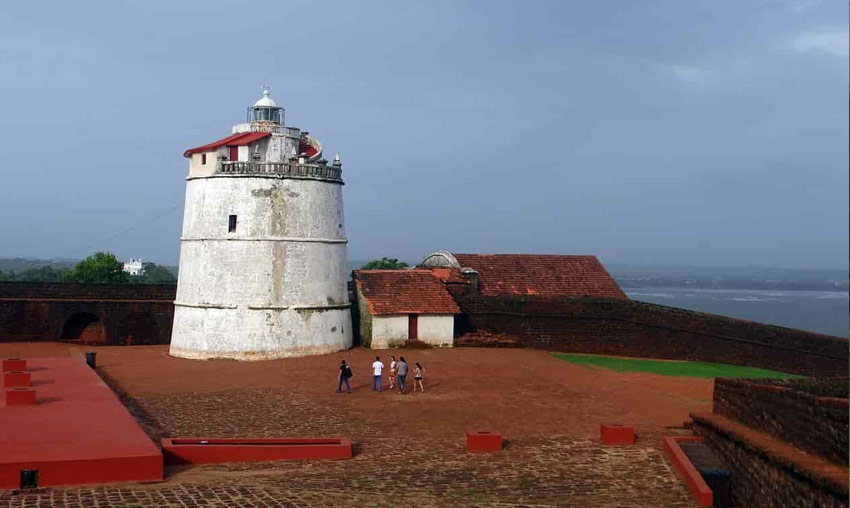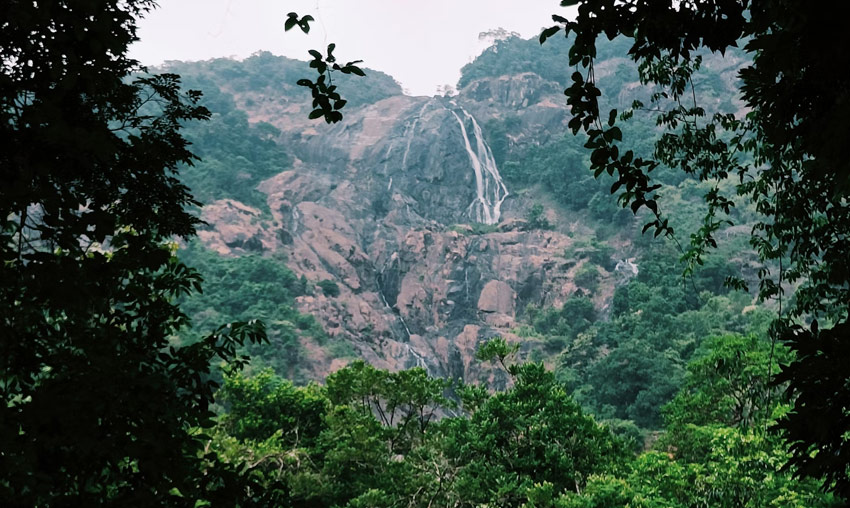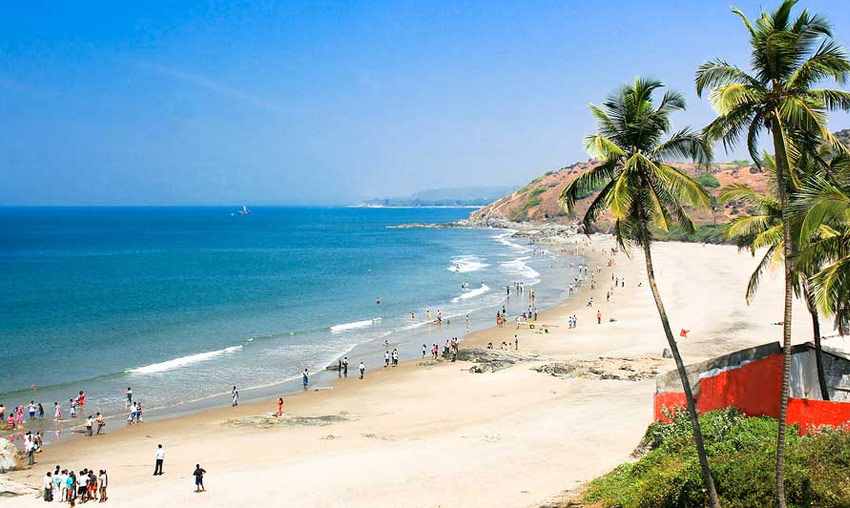Fort Aguada is a 17th-century Portuguese fort overlooking the confluence of the Mandovi River and the Arabian Sea. The deteriorating ramparts of the fort exist on Sinquerim Beach, some 18 km from Panjim. The fort’s main attractions are a lone four-story lighthouse (the only one of its kind in Asia) and a breathtaking sunset outlook.
Fort Aguada, built in 1612 to protect against the Dutch and Marathas, was the Portuguese’s most coveted and important fort, covering the entire peninsula at the southwestern tip of Bardez. The fort is named from the Portuguese word for water, ‘Agua’, and was once a source of freshwater for seafarers. It was one of Asia’s largest freshwater reservoirs, with a capacity of 2,376,000 gallons.
Fort Aguada has also served as Aguada jail. A memorial in front of the jail honours the liberation warriors, giving the fort a patriotic feel.
More on Fort Aguada
Fort Aguada History
Aguada Fort is a well-preserved Portuguese fortress in India, located near Sinquerim Beach. Its construction began in 1609 and was completed in 1612 by Ruy Tavara, the then Viceroy of Goa. The fort, located south of Candolim town on the Mandovi River, was erected to defend the Portuguese against the Dutch and Marathas. It was also a reference point for vessels arriving from Europe, as the lighthouse served this role. It was responsible with protecting cargo as well as the nearby Bardez sub-district.
Aside from the lighthouse, the fort has a moat, a gunpowder room, and a secret escape tunnel in case of war or emergency.
Architecture of Fort Aguada
Fort Aguada is an excellent example of Portuguese architecture. It is made of laterite stone, which is commonly available in Goa, and has weathered the test of time. Standing tall against the waves and fierce winds, the majestic fort was built on the Bardez peninsula and completely encompasses it. It is encircled by bastions on three sides, with a gate facing the river on the fourth.
Fort Aguada is separated into two sections, with the upper serving as a fort and watering station and the bottom as a safe dock for Portuguese ships.
Aguada Jail and Lighthouse
During the Salazar era, part of Fort Aguada was transformed into a jail. However, the Aguada jail is closed to the public. It has a statue that depicts Goa’s struggle for independence. Every June 18th, a ceremony commemorates Goa’s freedom soldiers.
The Aguada Fort also includes an impressive four-story lighthouse. Built in 1864, it is Asia’s oldest lighthouse. Oil lamps were once used to emit light every 7 minutes, however this was later reduced to 30 seconds. The Lighthouse dominates the scenery of the Fort. It was closed to the public several years ago and abandoned in 1976. As a result, a new lighthouse was built and named the Aguada Lighthouse. A bell from the lighthouse was later installed in Panaji’s Our Lady of Immaculate Conception Church. For a nominal price, a twisting staircase may take you to the summit, where you can enjoy a stunning sunset panorama.
How To Reach Fort Aguada
Fort Aguada is situated on the Aguada-Siolim Road near Sinquerim, Candolim. The peak and the beach are approximately 4 kilometres apart. This distance can be completed by renting a motorbike or taking a taxi from one of the neighbouring beaches. The daily fare for a motorbike is between INR 400 and 500. However, if you haggle, you can get it much cheaper. To rent a vehicle, you must have a valid driver’s license and another kind of identification. There is also a 2 kilometre pathway that can be used as an additional approach, however it is rather steep.
Timings : 9:30 AM – 6:00 PM
Entry Fee : Free
Built in : 1612
Location : Sinquerim (Candolim)
Must View : The Lighthouse, Aguada Jail, Experience the sunset, Church of St Lawrence


